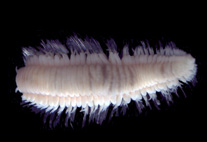Abstract
Aphanius marassantensis, new species, is described from the Kızılırmak River drainage in northern Anatolia based on colouration, meristic and morphometric characters, and the mtDNA COI barcode region. It is distinguished from other Anatolian Aphanius by one or several of the following characters: a stout body shape (BD/SL 28.2–39.6%), complete scale cover, and 25–28 scales along the lateral line. Males have 8–13 dark-brown lateral bars, of which the antepenultimate bar anterior to the caudal-fin base is 0.9–1.8 times wider than the anterior white interspace, 2–3 vertical rows of spots on the caudal fin, a black dorsal fin, sometimes with a narrow whitish-grey base, a white anal fin with 1–3 rows of black spots, in some individuals with a black margin, and hyaline pelvic fins. Females do not have vertical rows of dark-brown spots on caudal or anal fins, but numerous dark-brown spots on the flanks, arranged in 1–3 lateral rows behind a vertical from the dorsal-fin base. Their dorsal fin is hyaline with tiny dark-brown spots on rays and membranes; pectoral fins, caudal and anal fins are hyaline, and one prominent large dark-brown blotch is situated in mid-lateral position on the hypural plate. The new species is also distinguished by 11 fixed, diagnostic nucleotide substitutions in the mtDNA COI barcode region. The description of this new species, which brings the number of Anatolian Aphanius species to 12, underlines the character of Anatolia as a region of extraordinarily high biodiversity.

